A Multimodal Feature Fusion Framework for Sleep-Deprived Fatigue Detection to Prevent Accidents
Abstract
:1. Introduction
1.1. Literature Review
1.1.1. Literature Review Based upon Facial Features
1.1.2. Literature Review Based upon Vocal Features
1.1.3. Literature Review Based upon Reflex Analysis
1.1.4. Recent Literature Review Based upon Modern Techniques
2. Research Gaps
- The existing systems to detect fatigue due to the lack of sleep are primarily intrusive. In such kinds of systems, several biomedical sensors must be employed on an ambulatory subject’s body. The main disadvantage of using intrusive methods is that the subject remains aware during the detection process. Thus, there is a chance of a biased result in that case. Moreover, intrusive systems restrict the subject’s movement, leading to distortion.
- Furthermore, in most of the previous studies, uni-modal systems have been considered for such purposes, i.e., features from one domain are implemented. There is a possibility that the outcome will be significantly more accurate by using a multimodal feature fusion approach and hence include more features/parameters. Therefore, a nonintrusive system based on multimodal feature fusion is required to better assess fatigue caused by inadequate sleep.
3. Material and Methodology
3.1. Material
3.2. Subjects
3.3. Methodology
3.3.1. Data Acquisition
3.3.2. Feature Extraction
3.3.3. Proposed Multimodal Feature Fusion
3.3.4. Classification
4. Results and Discussion
5. Conclusions and Summary
Author Contributions
Funding
Institutional Review Board Statement
Informed Consent Statement
Data Availability Statement
Conflicts of Interest
References
- Scott, J.P.; McNaughton, L.R.; Polman Remco, C.J. Effects of sleep deprivation and exercise on cognitive, motor performance and mood. Physiol. Behav. 2006, 87, 396–408. [Google Scholar] [CrossRef] [PubMed]
- Desai, A.V.; Haque, M.A. Vigilance monitoring for operator safety: A simulation study on highway driving. J. Saf. Res. 2006, 37, 139–147. [Google Scholar] [CrossRef] [PubMed]
- Bunn, T.L.; Slavova, S.; Struttmann, T.W.; Browning, S.R. Sleepiness/fatigue and distraction/inattention as factors for fatal versus nonfatal commercial motor vehicle driver injuries. Accid. Anal. Prev. 2005, 37, 862–869. [Google Scholar] [CrossRef] [PubMed]
- Doudou, M.; Bouabdallah, A.; Berge-Cherfaoui, V. Driver Drowsiness Measurement Technologies: Current Research, Market Solutions, and Challenges. Int. J. Intell. Transp. Syst. Res. 2019, 18, 297–319. [Google Scholar] [CrossRef]
- Brookhuis, K.A.; de Waard, D. Monitoring drivers’ mental workload in driving simulators using physiological measures. Accid. Anal. Prev. 2009, 42, 898–903. [Google Scholar] [CrossRef]
- Vural, E.; Cetin, M.; Ercil, A.; Littlewort, G.; Bartlett, M.; Movellan, J. Drowsy Driver Detection Through Facial Movement Analysis. In Proceedings of the Human–Computer Interaction: IEEE International Workshop, HCI 2007, Rio de Janeiro, Brazil, 20 October 2007; Springer: Berlin/Heidelberg, Germany, 2007; Volume 4796, pp. 6–18. [Google Scholar] [CrossRef]
- Flores, M.J.; Armingol, J.M.; de la Escalera, A. Real-time drowsiness detection system for an intelligent vehicle. In Proceedings of the 2008 IEEE Intelligent Vehicles Symposium, Eindhoven, The Netherlands, 4–6 June 2008; pp. 637–642. [Google Scholar] [CrossRef]
- Fan, X.; Sun, Y.; Yin, B.; Guo, X. Gabor-based dynamic representation for human fatigue monitoring in facial image sequences. Pattern Recognit. Lett. 2010, 31, 234–243. [Google Scholar] [CrossRef]
- Sharma, N.; Dhall, A.; Gedeon, T.; Goecke, R. Modeling Stress Using Thermal Facial Patterns: A Spatio-Temporal Approach. In Proceedings of the 2013 Humaine Association Conference on Affective Computing and Intelligent Interaction, Geneva, Switzerland, 2–5 September 2013; pp. 387–392. [Google Scholar] [CrossRef]
- Hansen, J.H.L.; Patil, S. Speech Under Stress: Analysis, Modeling and Recognition. Speak. Classif. I. Lect. Notes Comput. Sci. 2007, 4343, 108–137. [Google Scholar] [CrossRef]
- Tawari, A.; Trivedi, M.M. Speech Emotion Analysis: Exploring the Role of Context. IEEE Trans. Multimed. 2010, 12, 502–509. [Google Scholar] [CrossRef]
- Fernandez, R.; Picard, R. Recognizing affect from speech prosody using hierarchical graphical models. Speech Commun. 2011, 53, 1088–1103. [Google Scholar] [CrossRef]
- Bozkurt, E.; Erzin, E.; Erdem, C.E.; Erdem, A.T. Formant position based weighted spectral features for emotion recognition. Speech Commun. 2011, 53, 1186–1197. [Google Scholar] [CrossRef]
- Krajewski, J.; Schnieder, S.; Sommer, D.; Batliner, A.; Schuller, B. Applying multiple classifiers and non-linear dynamics features for detecting sleepiness from speech. Neurocomputing 2012, 84, 65–75. [Google Scholar] [CrossRef]
- Caraty, M.J.; Montacié, C. Vocal fatigue induced by prolonged oral reading: Analysis and detection. Comput. Speech Lang. 2014, 28, 453–466. [Google Scholar] [CrossRef]
- Jaimes, A.; Sebe, N. Multimodal human-computer interaction: A survey. Comput. Vis. Image Underst. 2007, 108, 116–134. [Google Scholar] [CrossRef]
- Vizer, L.M.; Zhou, L.; Sears, A. Automated stress detection using keystroke and linguistic features: An exploratory study. Int. J. Hum. Comput. Stud. 2009, 67, 870–886. [Google Scholar] [CrossRef]
- Lim, Y.M.; Ayesh, A.; Stacey, M. Detecting cognitive stress from keyboard and mouse dynamics during mental arithmetic. In Proceedings of the 2014 Science and Information Conference, London, UK, 27–29 August 2014; pp. 146–152. [Google Scholar] [CrossRef]
- Nazmul Haque Nahin, A.F.M.; Alam, J.M.; Mahmud, H.; Hasan, K. Identifying emotion by keystroke dynamics and text pattern analysis. Behav. Inf. Technol. 2014, 33, 987–996. [Google Scholar] [CrossRef]
- Hooda, R.; Joshi, V.; Shah, M. A comprehensive review of approaches to detect fatigue using machine learning techniques. Chronic Dis. Transl. Med. 2021, 8, 26–35. [Google Scholar] [CrossRef]
- Kartsch, V.J.; Benatti, S.; Schiavone, P.D.; Rossi, D.; Benini, L. A sensor fusion approach for drowsiness detection in wearable ultra-low-power systems. Inf. Fusion 2018, 43, 66–76. [Google Scholar] [CrossRef]
- Ye, C.; Yin, Z.; Zhao, M.; Tian, Y.; Sun, Z. Identification of mental fatigue levels in a language understanding task based on multi-domain EEG features and an ensemble convolutional neural network. Biomed. Signal Process. Control 2022, 72, 103360. [Google Scholar] [CrossRef]
- Wu, N.; Sun, J. Fatigue Detection of Air Traffic Controllers Based on Radiotelephony Communications and Self-Adaption Quantum Genetic Algorithm Optimization Ensemble Learning. Appl. Sci. 2022, 12, 10252. [Google Scholar] [CrossRef]
- Siam, A.I.; Soliman, N.F.; Algarni, A.D.; Samie, F.E.A.; Sedik, A. Deploying Machine Learning Techniques for Human Emotion Detection. Comput. Intell. Neurosci. 2022, 2022, 8032673. [Google Scholar] [CrossRef]
- Alnuaim, A.A.; Zakariah, M.; Alhadlaq, A.; Shashidhar, C.; Hatamleh, W.A.; Tarazi, H.; Shukla, P.K.; Ratna, R. Human-Computer Interaction with Detection of Speaker Emotions Using Convolution Neural Networks. Comput. Intell. Neurosci. 2022, 2022, 7463091. [Google Scholar] [CrossRef] [PubMed]
- Tuncer, T.; Dogan, S.; Ertam, F.; Subasi, A. A dynamic center and multi threshold point based stable feature extraction network for driver fatigue detection utilizing EEG signals. Cogn. Neurodyn. 2021, 15, 223–237. [Google Scholar] [CrossRef] [PubMed]
- Fatima, B.; Shahid, A.R.; Ziauddin, S.; Safi, A.A.; Ramzan, H. Driver Fatigue Detection Using Viola Jones and Principal Component Analysis. Appl. Artif. Intell. 2020, 34, 456–483. [Google Scholar] [CrossRef]
- O’Keeffe, K.; Hodder, S.; Lloyd, A. A comparison of methods used for inducing mental fatigue in performance research: Individualised, dual-task and short duration cognitive tests are most effective. Ergon. Taylor Fr. 2020, 63, 1–12. [Google Scholar] [CrossRef]
- Heaton, K.J.; Williamson, J.R.; Lammert, A.C.; Finkelstein, K.R.; Haven, C.C.; Sturim, D.; Smalt, C.J.; Quatieri, T.F. Predicting changes in performance due to cognitive fatigue: A multimodal approach based on speech motor coordination and electrodermal activity. Clin. Neuropsychol. 2020, 34, 1190–1214. [Google Scholar] [CrossRef]
- Sikander, G.; Anwar, S. Driver Fatigue Detection Systems: A Review. IEEE Trans. Intell. Transp. Syst. 2019, 20, 2339–2352. [Google Scholar] [CrossRef]
- Zhao, C.; Gao, Z.; Wang, Q.; Xiao, K.; Mo, Z.; Deen, M.J. FedSup: A communication-efficient federated learning fatigue driving behaviors supervision approach. Future Gener. Comput. Syst. 2023, 138, 52–60. [Google Scholar] [CrossRef]
- Zhang, Y.; Guo, H.; Zhou, Y.; Xu, C.; Liao, Y. Recognising drivers’ mental fatigue based on EEG multi-dimensional feature selection and fusion. Biomed. Signal Process. Control 2022, 79, 104237. [Google Scholar] [CrossRef]
- Chen, J.; Yan, M.; Zhu, F.; Xu, J.; Li, H.; Sun, X. Fatigue Driving Detection Method Based on Combination of BP Neural Network and Time Cumulative Effect. Sensors 2022, 22, 4717. [Google Scholar] [CrossRef]
- Li, Y.; Zhang, S.; Zhu, G.; Huang, Z.; Wang, R.; Duan, X.; Wang, Z. A CNN-Based Wearable System for Driver Drowsiness Detection. Sensors 2023, 23, 3475. [Google Scholar] [CrossRef]
- Zhang, J.; Yin, Z.; Chen, P.; Nichele, S. Emotion recognition using multi-modal data and machine learning techniques: A tutorial and review. Inf. Fusion 2020, 59, 103–126. [Google Scholar] [CrossRef]
- Tang, L.; Yuan, J.; Ma, J. Image fusion in the loop of high-level vision tasks: A semantic-aware real-time infrared and visible image fusion network. Inf. Fusion 2022, 82, 28–42. [Google Scholar] [CrossRef]
- Singh, M.; Singh, S.; Gupta, S. An information fusion based method for liver classification using texture analysis of ultrasound images. Inf. Fusion 2014, 19, 91–96. [Google Scholar] [CrossRef]
- Dai, L.; Li, Y.; Zhang, M. Detection of Operator Fatigue in the Main Control Room of a Nuclear Power Plant Based on Eye Blink Rate, PERCLOS and Mouse Velocity. Appl. Sci. 2023, 13, 2718. [Google Scholar] [CrossRef]
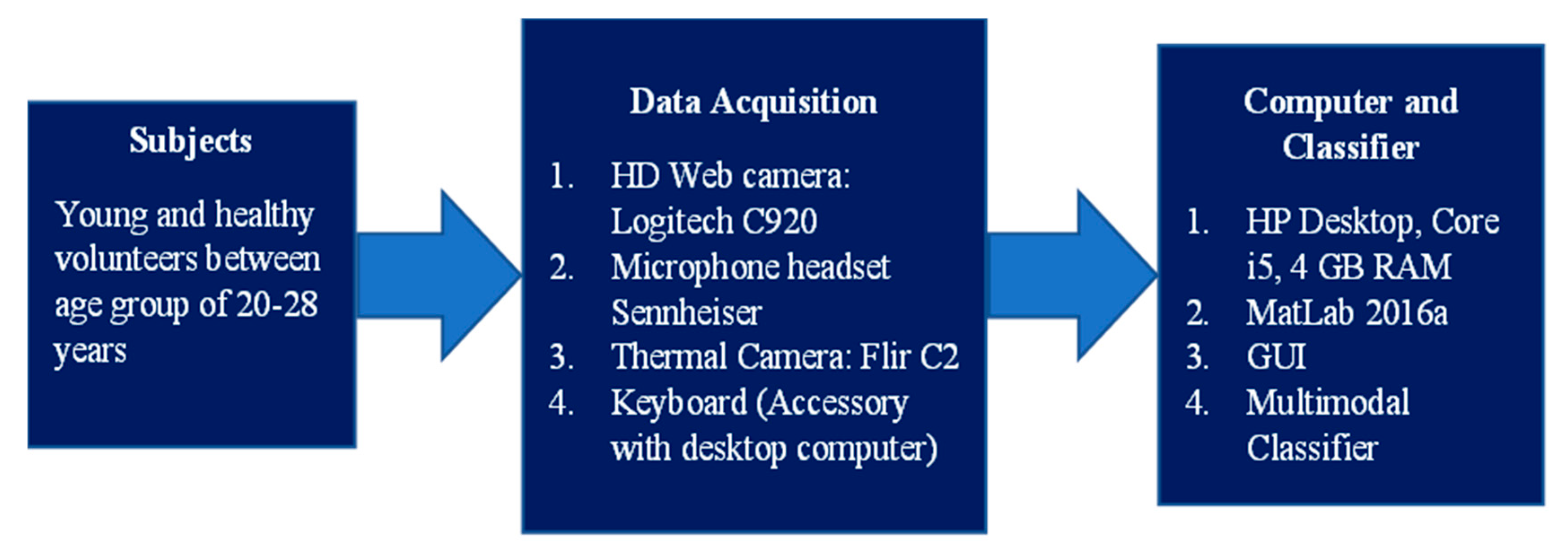
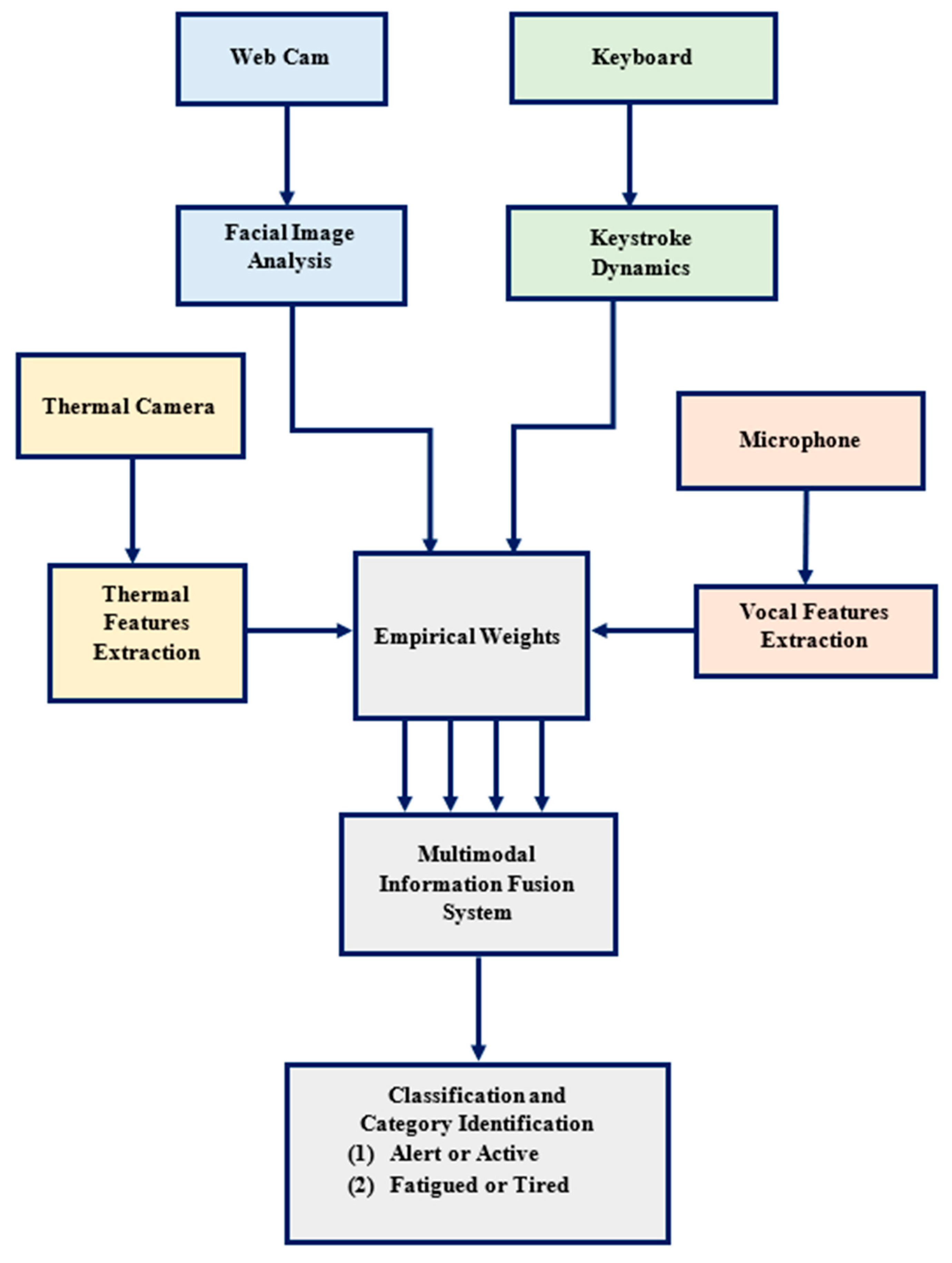
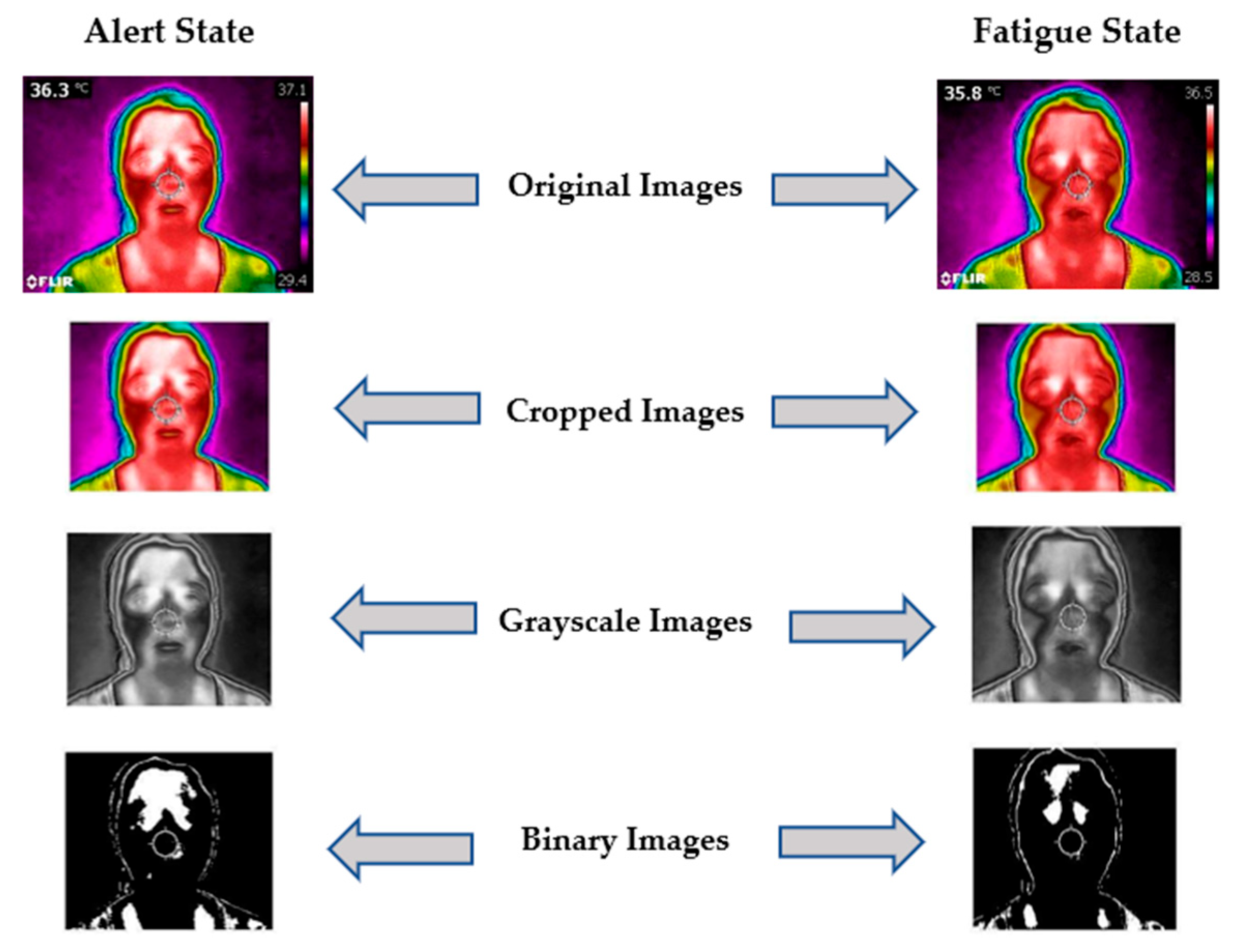

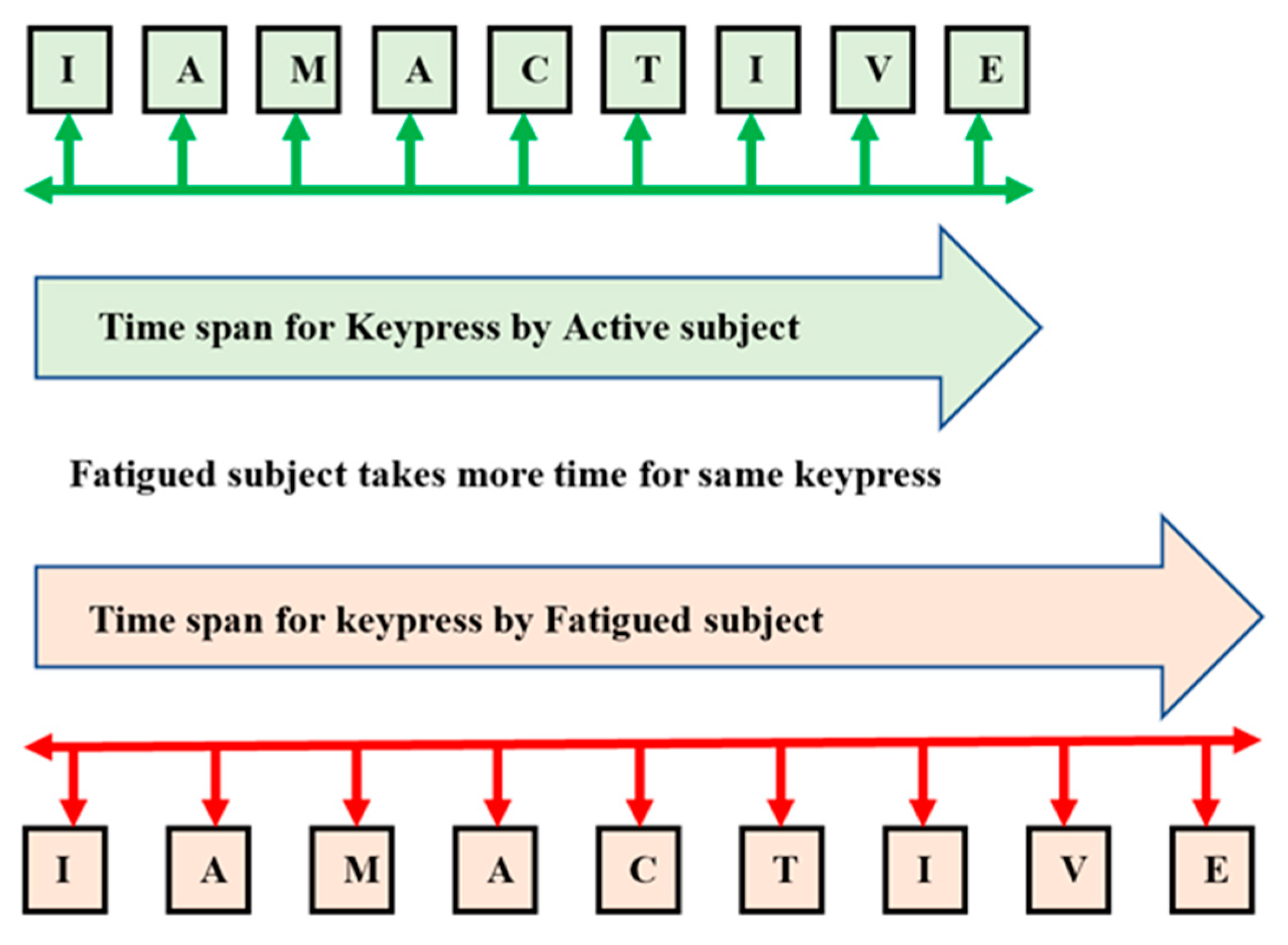
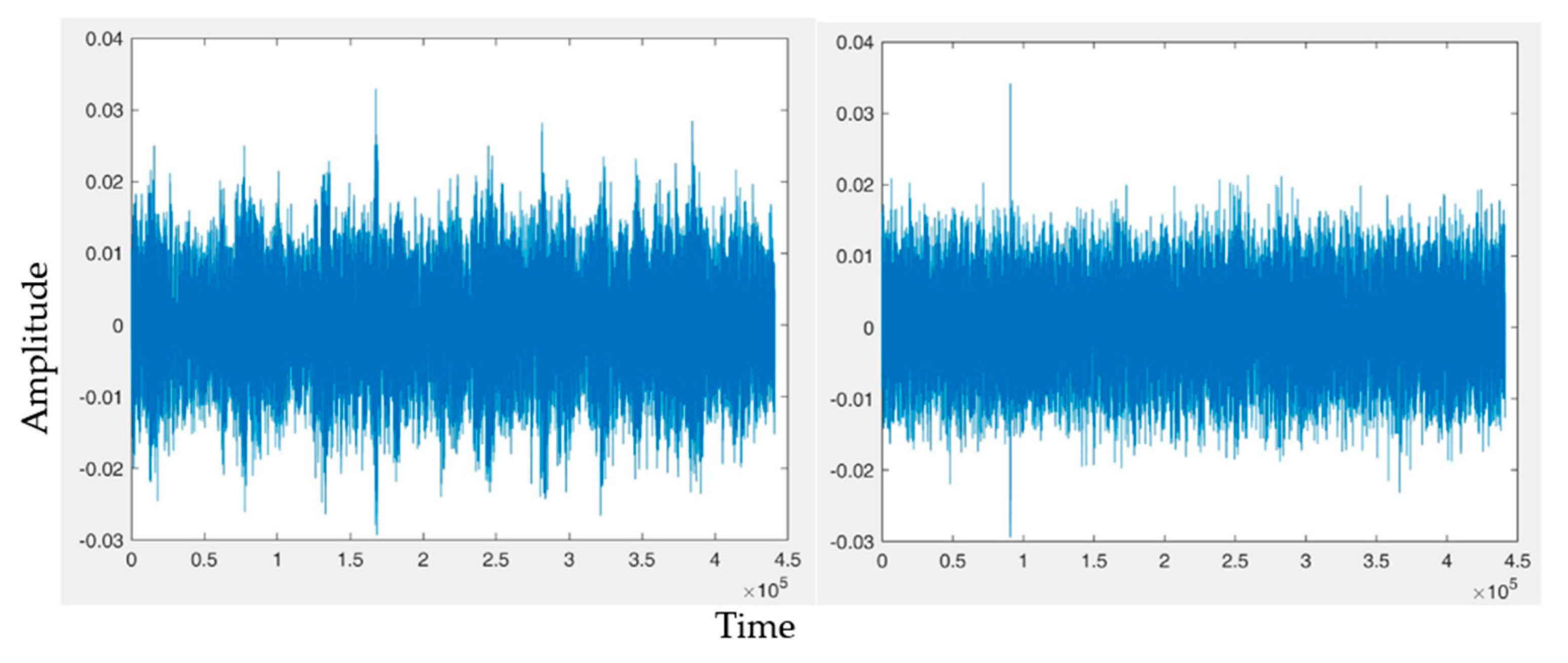
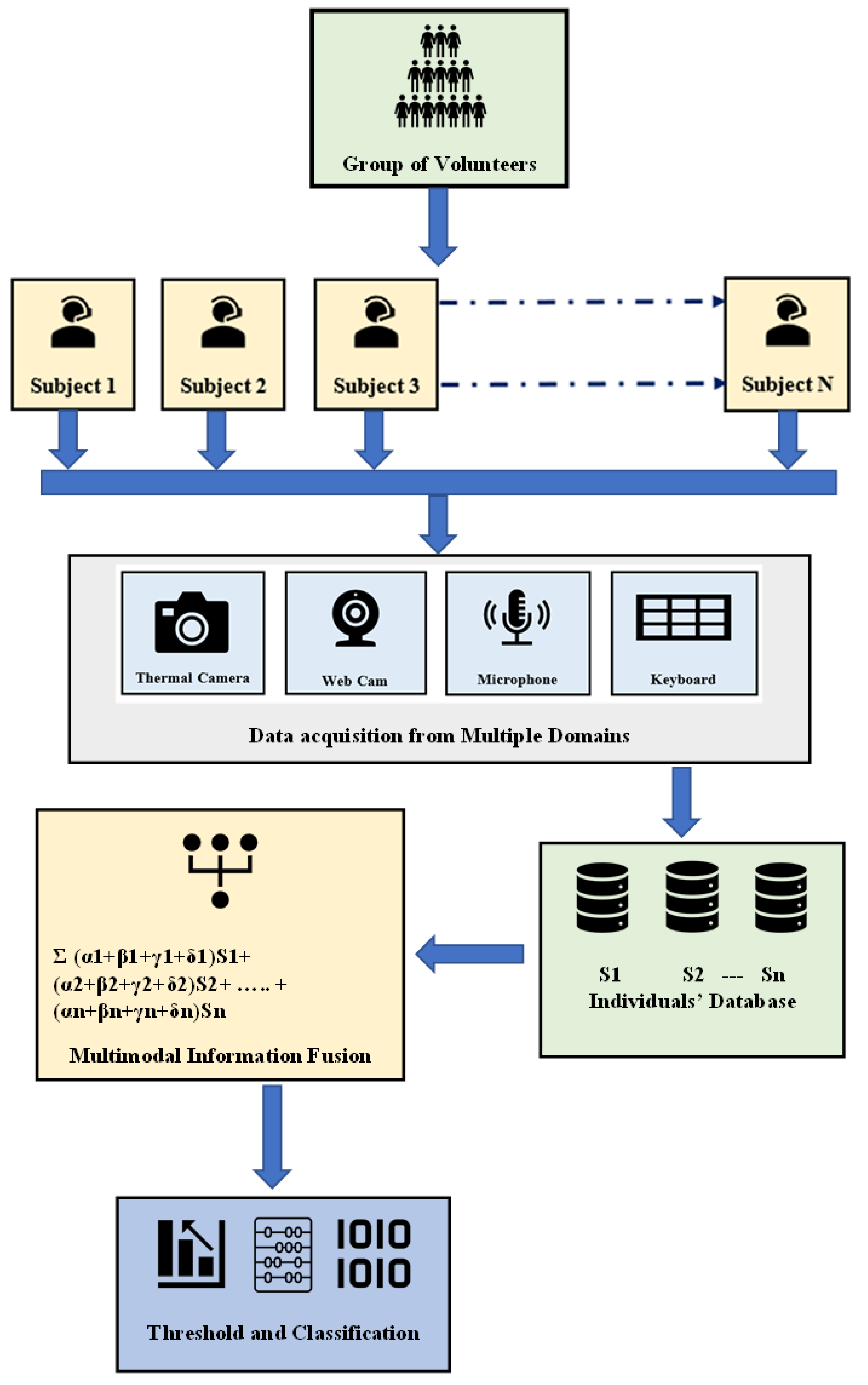
| S. No. | Features | Description |
|---|---|---|
| 1 | Eyes Close Period (ECP) | The time period for closed eyes in a 3-min video sample |
| 2 | Open to Close Changeover Period (OCOP) | The time for the eye state to change from an open state to the closed state |
| 3 | Close to Open Changeover Period (COCP) | The time for the eye state to change from a closed state to an open state |
| 4 | Total Changeover Time (TCT) | Time period for total changeover states (OCOP+COCP) |
| 5 | Inter Changeover Frame Count (ICFC) | Changeover frames count |
| 6 | Eyes Blink Count (BKC) | Total eye blinks number in a 3-min video sample |
| S. No. | Features | Description |
|---|---|---|
| 1 | Pixel count | Total number of white pixels in binary image |
| 2 | FHFa | Angular Sum of Forehead region |
| 3 | FHFr | Radial sum of forehead region |
| 4 | PRFa | Angular sum of periorbital region |
| 5 | PRFr | Radial sum of periorbital region |
| S. No. | Features | Description |
|---|---|---|
| 1 | KSR | Keystroke Rate |
| 2 | CRE | Character Error |
| 3 | AVD | ASCII Value Difference |
| 4 | TST | Total String Time |
| S. No. | Features | Description |
|---|---|---|
| 1 | FFP | Fundamental Frequency (Pitch) |
| 2 | RSH | Rate of Speech |
| 3 | SPL | Sound Pressure Level |
| 4 | PSD | Power Spectral Density |
| 5 | SPD | Speech Duration |
| S. No. | Domains | Equal Empirical Weights | Accuracy | Optimized Empirical Weights | Optimized Accuracy |
|---|---|---|---|---|---|
| 1 | Visual + Thermal | 0.5 + 0.5 | 75% | 0.4 + 0.6 | 77.5% |
| 2 | Visual + Keystroke | 0.5 + 0.5 | 70% | 0.65 + 0.35 | 75% |
| 3 | Visual + Voice | 0.5 + 0.5 | 70% | 0.62 + 0.38 | 72.5% |
| 4 | Thermal + Keystroke | 0.5 + 0.5 | 72.5% | 0.7 + 0.3 | 75% |
| 5 | Thermal + Voice | 0.5 + 0.5 | 72.5% | 0.55 + 0.45 | 77.5% |
| 6 | Keystroke + Voice | 0.5 + 0.5 | 70% | 0.31 + 0.69 | 72.5% |
| 7 | Visual + Thermal+ Keystroke | 0.34 + 0.33 + 0.33 | 75% | 0.36 + 0.38 + 0.26 | 77.5% |
| 8 | Visual + Thermal + Voice | 0.34 + 0.33 + 0.33 | 82.5% | 0.34 + 0.36 + 0.30 | 87.5% |
| 9 | Thermal+ Keystroke + Voice | 0.34 + 0.33 + 0.33 | 80% | 0.35 + 0.25 + 0.30 | 85% |
| 10 | Visual + Thermal + Keystroke + Voice | 0.25 + 0.25 + 0.25 + 0.25 | 82.5% | 0.29 + 0.37 + 0.16 + 0.18 | 92.5% |
| S. No. | Name of Classifier | Accuracy % | Correctly Classified Instances | Incorrectly Classified Instances |
|---|---|---|---|---|
| 1 | kNN | 85 | 34 | 6 |
| 2 | Random Tree | 87.5 | 35 | 5 |
| 3 | Random Forest | 87.5 | 35 | 5 |
| 4 | SVM | 90 | 36 | 4 |
| 5 | Multilayer Perceptron | 90 | 36 | 4 |
| 6 | Proposed Method | 92.5 | 37 | 3 |
| Domains | Subject | True | False | Accuracy |
|---|---|---|---|---|
| 1. Visual spectra image | Positive | 13 | 7 | 67.5% |
| Negative | 6 | 14 | ||
| 2. Thermal spectra image | Positive | 16 | 4 | 75% |
| Negative | 6 | 14 | ||
| 3. Keystroke dynamics | Positive | 14 | 6 | 67.5% |
| Negative | 7 | 13 | ||
| 4. Vocal Analysis | Positive | 14 | 6 | 70% |
| Negative | 6 | 14 | ||
| 5. Proposed Multimodal feature fusion technique | Positive | 18 | 2 | 92.5% |
| Negative | 1 | 19 |
| Domain | Folds | True | False | Accuracy | |
|---|---|---|---|---|---|
| Multimodal Feature Fusion | 1 | Positive | 19 | 1 | 92.5% |
| Negative | 2 | 18 | |||
| 2 | Positive | 19 | 1 | 95% | |
| Negative | 1 | 19 | |||
| 3 | Positive | 18 | 2 | 92.5% | |
| Negative | 1 | 19 | |||
| Average Accuracy | 93.33% | ||||
Disclaimer/Publisher’s Note: The statements, opinions and data contained in all publications are solely those of the individual author(s) and contributor(s) and not of MDPI and/or the editor(s). MDPI and/or the editor(s) disclaim responsibility for any injury to people or property resulting from any ideas, methods, instructions or products referred to in the content. |
© 2023 by the authors. Licensee MDPI, Basel, Switzerland. This article is an open access article distributed under the terms and conditions of the Creative Commons Attribution (CC BY) license (https://creativecommons.org/licenses/by/4.0/).
Share and Cite
Virk, J.S.; Singh, M.; Singh, M.; Panjwani, U.; Ray, K. A Multimodal Feature Fusion Framework for Sleep-Deprived Fatigue Detection to Prevent Accidents. Sensors 2023, 23, 4129. https://doi.org/10.3390/s23084129
Virk JS, Singh M, Singh M, Panjwani U, Ray K. A Multimodal Feature Fusion Framework for Sleep-Deprived Fatigue Detection to Prevent Accidents. Sensors. 2023; 23(8):4129. https://doi.org/10.3390/s23084129
Chicago/Turabian StyleVirk, Jitender Singh, Mandeep Singh, Mandeep Singh, Usha Panjwani, and Koushik Ray. 2023. "A Multimodal Feature Fusion Framework for Sleep-Deprived Fatigue Detection to Prevent Accidents" Sensors 23, no. 8: 4129. https://doi.org/10.3390/s23084129
APA StyleVirk, J. S., Singh, M., Singh, M., Panjwani, U., & Ray, K. (2023). A Multimodal Feature Fusion Framework for Sleep-Deprived Fatigue Detection to Prevent Accidents. Sensors, 23(8), 4129. https://doi.org/10.3390/s23084129






